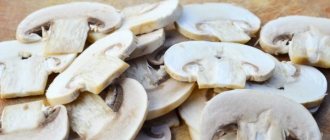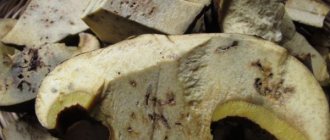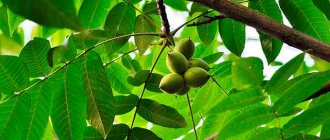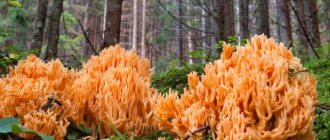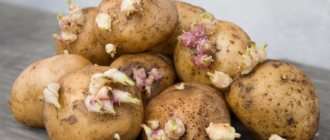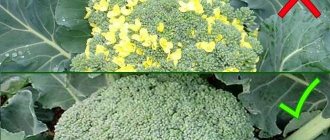1.Lighting and temperature
An exotic plant is comfortable in a well-lit place, but direct sunlight should be excluded to avoid burns. American Perseus cannot tolerate:
- drafts;
- sudden changes in temperature;
- frosts.
For this reason, it will not be possible to grow an avocado tree on the balcony - when the first cold weather sets in, the seedling will die. You can take a potted plant out into the fresh air, but only in summer.
The optimal temperature for growth and development is 22-28 degrees above zero. The minimum temperature is 18 degrees, but not lower.
In its natural environment, avocado grows up to 20 meters in height; at home, its growth is limited to 2 meters (sometimes it grows up to 2.5 meters). Rooms with low ceilings are not suitable for exotica.
How to grow avocados at home
In order for a seed to germinate, you need to select a special container for its germination, choose a soil that you like, and also follow the rules of watering, maintaining temperature and humidity. Like any tropical plant, avocado can seem moody. However, if these care requirements are neglected, the plant will simply die.
Which pot to choose
Avocados need a large pot. After all, the plant itself is quite large; in nature, individual specimens stretch more than 20 meters in height. At home, of course, you cannot expect such a result. The maximum that a greenhouse exotic is capable of is to grow three meters in height, and no more is needed.
When the pot is voluminous, with high walls, the seedling will be comfortable in it in the first years of its life. After three years, avocados are usually transplanted into another container. This is done in order to breathe new energy into the roots, because the soil in which the plant grew becomes poorer and exhausts its reserves of nutrients. Also, a growing organism requires a larger pot than it was originally, because the root system is developing. Usually the plant is replanted in a waddling manner so as not to damage the root.
How to grow seedlings
What soil does avocado need?
Avocado does not like clay or dense substances. The plant needs loose soil into which air and moisture pass well. The soil should be of medium acidity. You can achieve the desired level by mixing soil with wood ash.
Experienced plant growers advise making soil by mixing turf, sand and humus. Proportions 2:1:1.
You can also try a combination of peat, sand and leaf soil. Proportions 1:1:1.
If you use store-bought soil, you need to make sure that there is no moss in the soil mixture, that the acidity level is below average, and that the soil structure is loose.
Some craftsmen grow avocados in garden soil laid on a drainage layer. Flower growers also advise mulching the top layer.
How to prepare soil for seedlings at home in our article.
How to plant an avocado tree to produce fruits
First you need to arrange an “apartment” for the future sprout. To do this, place drainage at the bottom of the pot. You can take expanded clay, pebbles. Soil is placed on the drainage layer. Avocados will like a soil mixture of sand and earth. The seed is lowered into the soil so that its wide lower part is a couple of centimeters deep in the ground, and the pot is sealed with polyethylene. This creates the greenhouse effect necessary for germination.
Some gardeners use the open method to germinate seeds. In this case, water is poured into the container and the bone is lightly immersed, securing it at four ends with toothpicks. Toothpicks are stuck directly into the bone. Of course, wooden toothpicks cannot penetrate a solid wall, so you first need to make holes with an awl or the point of a knife, and only then insert toothpicks into the holes. In this case, most of the body of the bone should not be in water. In this state, the seed will germinate and can be placed in the ground, but only when the roots become at least four centimeters.
If the water method seems difficult, you can use hydrogel. This is a good material that retains the moist environment necessary for germination.
You can also simply wrap the bone in a damp cloth and leave it for a while, without allowing the fabric “cocoon” to dry out. In such a damp “blanket” and covered with polyethylene, the seed will definitely germinate. For good results, the “cocoon” is placed in a dark and warm place.
Usually the seed germinates within a month. First the roots appear, then a timid sprout. You need to wait a few days and start planting in the ground.
We will tell you how to grow dates at home in this article.
How to care for avocados at home
Avocado is a tropical plant, which means it requires increased attention and the creation of a tropical atmosphere. Is it possible to have such a climate at home somewhere in the middle zone? Maybe. Experienced gardeners advise planting this exotic plant in a room with windows facing west; this will provide the lighting the plant needs.
Avocados do not like drafts, sharp winds, or temperature changes. You should try to create an ideal 20 degrees Celsius temperature at home during the winter, while a hot climate is preferable during the summer months.
Watering is carried out frequently, but you need to pay attention to the condition of the soil. The plant does not like swampy soil; it will begin to ache and wither.
There should always be humidity in the room. To do this, place containers with expanded clay poured with water, bowls with liquid next to the sprout, and spray with a spray bottle.
If the rules of care are not followed, the plant may weaken and become sick.
The most common diseases:
- The leaves are drying.
Dry air and poor watering lead to this problem. It is necessary to humidify the air in the room and organize regular watering.
- Falling leaves.
Failure to comply with the temperature regime and drafts will be the cause in this case. The plant should be placed in a room where there are no drafts, and the temperature should be set to plus 25 degrees.
- Leaf color is not bright enough.
Avocados are deficient in light, so the foliage is weak and pale. It is better to place the young plant on the windowsill next to the window.
- Pest infestation. For example, spider mites are dangerous.
In case of pest attack, treatment is carried out with special means.
- Powdery mildew can also affect avocados.
White plaque on a plant is extremely dangerous; you can lose the seedling. To save the plant, you need to use a folk remedy - spray it with soda solution. It is prepared simply: take three grams of soda per liter of water. You can also use a solution of soap and copper sulfate. In this case, two grams of copper sulfate and twenty grams of soap are dissolved in a liter of water. The entire plant is treated with this composition. If you notice the disease in time and start timely treatment, the avocado can be saved.
By properly caring for the plant, you can grow a beautiful, healthy tree. Some gardeners even manage to plant an entire ornamental garden. If weather conditions permit, the elongated “miracle” can be planted in the garden plot. Of course, we are talking about varieties that are not afraid of temperature changes. And of course, tropical plants can only be transplanted into garden plots in southern areas.
At the same time, gardeners recommend first accustoming avocados to outdoor air. Let there be “walks” on the balcony first, hardening off the plant. Then you can do the transplant. However, you need to remember that in the winter months it will have to be wrapped up so that winter frosts do not destroy the tropical exotic. You will definitely need to resort to mulch and flooring.
You will learn how to grow lychees at home in our article.
How to shape an avocado
At home, avocados usually serve as a green decorative element, so the plant should not be allowed to look untidy. Experienced gardeners advise pinching the top of the avocado to prevent the plant from stretching. However, you should not pinch a plant if the tree has fewer than eight leaves.
Gardeners advise pinching:
- For the first time: when the plant has risen to 25 centimeters, remove the top couple of leaves.
- The second time: when the side shoots appear, pinch them again.
In addition to pinching, the tree is pruned. This procedure is for spring. It is during this period that the plant begins to grow, and for the plant to develop properly, it needs to be crowned. There are no special tips for crown design; each gardener is guided by his own desires.
How to grow kumquats at home can be found in our article.
Feeding and fertilizers
Avocado prefers fertilizers that are used when growing citrus trees. Every month, with the exception of the dormant period - from early autumn to March - the plant is fed for growth and healthy development. In addition to special fertilizer for citrus fruits, a complex composition is suitable.
Experienced gardeners advise:
- Use either organic or mineral fertilizers.
- You cannot fertilize more than twice a month in the summer.
- A good organic fertilizer would be an infusion of onion peels.
How an avocado blooms and bears fruit
At home, avocados bloom very rarely. However, experienced plant growers achieve flowering after six years of caring for it. This exotic blooms in inflorescences consisting of small greenish-yellow flowers.
Avocado fruits are large, like a large egg with pulp inside. The taste is slightly sweet. In itself there is a bone, quite large. The fruit has a dense green skin. Unfortunately, an avocado grown from a seed at home is unlikely to bear fruit. True, very experienced and patient gardeners and flower growers achieved positive results. For the most patient owners, the plant bears fruit in 7-8 years. For best effect, the plant is grafted in the spring.
If all the requirements are met, you can get not too large green fruits.
It is worth noting that avocado is rich in microelements. It contains iron and magnesium, calcium and sodium, zinc and potassium, as well as phosphorus. There is a lot of vitamin D. Therefore, if you manage to grow a fruit-bearing tree at home, you can once and for all protect yourself from many diseases. After all, if you introduce avocado into your diet, you can protect the body from toxins and potassium deficiency, improve blood circulation and remove harmful cholesterol from the body, protect the heart from unnecessary stress, and restore youth to hair and skin. In addition, avocado is an excellent remedy for fatigue.
If an ornamental plant does not want to give fruit, you should not despair. But the avocado will try to ensure that there is less dust and a more clean atmosphere in the house.
However, you need to remember that avocado is a rather harmless plant. If the fruit is healthy, the leaves can be dangerous for those prone to allergic reactions. The leaves are also dangerous for pets, so in no case should you allow pets to get close and, even more so, to taste the juicy leaves.
How to grow ginger from store-bought root
Priming
For normal development of the plant, special soil is needed. Avocado prefers soils with a high humus content - special formulations for exotic plants are sold in specialized stores.
At home, the mixture is prepared from the following components:
- expanded clay (1 part);
- soil from the garden (2 parts);
- humus (0.5 parts).
The soil should allow air and moisture to pass through well and be loose. There must be drainage at the bottom of the pot so that the water does not stagnate. When water stagnates, the root system rots and the tree dies.
What soil should you choose for germinating avocados?
Selecting the right soil is a responsible matter. Those who think that you can grow avocados in any soil are wrong. For example, in acidic soil, even if it takes root, it will be difficult. It is recommended to go to a flower shop and buy special soil for flowers that has already been fertilized. And already at home, add a little sand and peat to it.
Currently reading: What are the benefits of cherries?
A very important point is to provide the seed with the opportunity to breathe in the soil, so you must add drainage there and make sure it is sufficiently loose.
3. Planting material
The easiest way to grow an avocado is from a ripe fruit seed. They buy it in the store, first determining the degree of ripeness by pressing a finger on the peel. If the dent quickly smoothes out, it means the fruit is ripe.
The seed is removed, washed under water, dried with a paper towel and planted the same day. Varieties with smooth skin have better germination than pimpled avocados.
What is avocado
Avocados have been on store shelves for quite some time. Finding it in the supermarket is not a problem. At the same time, it remains an exotic product, the origin of which not everyone knows.
Avocado is a fruit, no matter how strange it may sound. It grows on a tree of the same name. The tree originates in the laurel family. Its height can reach 20 meters, but there are almost 400 varieties of fruit. Some of them are edible, but others are best not eaten.
Avocado looks like a regular pear. It differs in the color of the peel. It comes in green, red and purple colors. The taste of the fruit is similar to pumpkin with a nutty flavor. During the ripening process it has a different taste. The fruits themselves, eaten as food, weigh no more than 300 grams. Half of the weight falls on the bone located in the very center. You should not try it, it contains toxic substances. But the pulp of the fruit has beneficial properties. The consistency of a ripe avocado is similar to butter, with a rather oily pulp.
4.Grouting methods
The fruit seed is germinated using closed and open methods:
- Closed - involves planting the seed directly into the ground. It is buried in the ground with a blunt end - so that half is above the ground. The sprout will appear in about a month.
- Open means germination without soil, in water. The seed is immersed 1/3 of the way into water with the blunt end, supports are built to prevent it from sinking lower, and roots are waited for to appear. When the root grows to 3-4 cm, it is transplanted into the ground.
Some gardeners add growth stimulants to the water to speed up the process.
Tree care
If tree growth is undesirable, pinching can be done. We do the first pinching after the formation of the eighth leaf. Preferably in the spring. The next ones are after every 5-6 sheets.
Tree care includes:
- Watering. It is produced from mid-June to mid-September as the soil dries.
- Feeding. Fertilizers can be applied in spring and autumn at the rate of 100-120 g per 1 square meter. m crown projection, and it is advisable to give the entire dose of nitrogen in the spring, and potassium and phosphorus in the fall.
- Loosening and mulching. Caring for avocados also involves shallow loosening of tree trunk strips, mowing weeds between rows and mulching with mowed plant matter.
- Crown care. Remove dying and weak branches, thin out overgrown ones when they become very thick.
- Shelter for the winter. Young plants are less resistant to frost than adults, so it is advisable to use winter shelters made of plastic film and non-woven material. It is recommended to immediately spray trees that have lost their leaves after frost with a solution of chalk or slaked lime to protect the branches from sunburn.
- Pollination. Since avocado has a complex pollination system, it is recommended to combine several male and female trees on the site. This condition will guarantee the ovary and fruit ripening.
6.Pot
Novice gardeners make mistakes at the stage of choosing a pot - this will cause problems later on. The container must be deep, since the root system of American Persea is characterized by rapid growth. Cramped conditions will affect growth, leaf color, and bushiness.
As the plant grows, it needs to be transplanted into another container of a suitable size. In the first 5 years this is done every year, then every 3 years.
Containers made of ceramics or clay are preferable. Natural materials allow air to pass through and accumulate heat. They are pre-treated with antiseptics to prevent the risk of bacterial infection of seedlings.
Disease and pest control
Most often, spider mites and scale insects appear on avocados, and their presence is revealed by yellowing and falling leaves.
There are several ways to control pests:
- Wash the stem and leaves of the tree with a solution of laundry soap. The easiest way to do this is to place the pot in the bathtub. The soil is only lightly sprinkled with the solution so as not to provoke rotting of the root system.
- Wipe the leaves with a cloth moistened with 96% alcohol. It will be possible to destroy parasites using this method, but spider mite eggs will not.
- Treat the plant with special insecticides-acaricides such as “Aktellika”, “Sunmaita”, “Fitoverma”, etc.
Currently reading: What is the difference between cherries and sweet cherries, which is healthier
Sometimes powdery mildew appears on avocados and the leaves turn black. Most often this happens when watering rules are violated. To eliminate it, it is necessary to remove the top layer of soil, cut off areas of the tree affected by mold, and then treat it with a soapy or weak manganese solution.
7.Irrigation mode
To grow an avocado at home, you need to water it regularly and properly. The plant loves moisture, but when it stagnates in the root zone it dies - the roots rot.
The frequency of watering depends on the season:
- 1-2 times a week – in late spring and summer, when it’s hot outside;
- 2 times a month – in late autumn and winter, when it’s cold.
Water for irrigation should be soft, purified, and at room temperature.
In the hot season, the air in the room will have to be humidified to a level of 80%. They do this in several ways:
- install a humidifier;
- Place a jar or other container with water next to the plant;
- spray water from a spray bottle.
When spraying moisture, it is important that it does not fall on the persea leaves - settled wet drops can cause sunburn.
How to properly prepare an avocado seed for planting
To grow this plant at home, you need to carefully approach the seed material. That is, the bone must be well prepared. Moreover, not every fruit is suitable for taking a seed from it. It is useless to take unripe or rotted fruit that has begun to deteriorate. Such a bone is not viable. But a dense, moderately ripe avocado, which springs back when pressed, is suitable.
The fruit needs to be kept warm for a couple of hours, and then cut, remove the seed without damaging it. Then the bone needs a gentle, light shower so that the shell is not damaged. After the shower, you need to dry it. After all the manipulations, the bone is ready.
Read our article about the benefits and harms of avocados for the body.
8.Fertilizer
Growing at home requires periodic application of fertilizing to the soil. Exotics need complex mineral fertilizer. It is applied after watering.
Feeding begins in April and ends in early September. Frequency – 1-2 times a month. You can alternate mineral and organic fertilizers.
9. Pinching
If you look at a photo of a homemade avocado tree, it will show an unattractive single-stemmed plant or a nice lush bush. In the first case, the crown was not formed, in the second, it was.
To form a beautiful tree, pinching is performed - it stimulates the growth of lateral buds and side shoots. Pinch a sprout that has grown to 30 cm and has 8 or more leaves. Here it is important not to overdo it, so that the density of the crown is moderate, and all leaves and shoots are evenly illuminated and ventilated.
Planting and transplanting
After the first foliage appears on the tree, it’s time to choose a larger container for it. When replanting, care must be taken not to damage the delicate roots of the plant. Place the seed in the ground so that a small part of it faces outward. We compact the soil and water the plant generously.
The next transplant into a larger pot should be done after the plant has reached a height of at least 1.5 m.
Avocado pot
Ideally, an avocado pot should have a drainage system. If you dream of a tall, spreading tree, choose a larger container. If you want a “baby” no more than 1 m tall, limit yourself to a medium pot. In any case, it is better to take a container in the shape of a cylinder or close to it, because... Avocado roots grow deep, not wide. This is especially true after the plant has reached a height of one to one and a half meters.
What soil to prepare
The raw material for the earth mixture is garden soil mixed with coarse pitch, humus or wet peat. At the bottom of the pot we lay out a drainage system made of finely crushed brick or expanded clay, with the addition of regular sand, moss and/or peat. Drainage is necessary to prevent stagnation of water. Excess moisture can lead to rot and death.
10.Flowering and fruiting
Do avocados grown at home bloom and bear fruit? It's rare, but it happens. With a normal microclimate and good care, the tree can bloom in 3-4 years. Its flowers are small, white-green, and shaped like stars.
Pollination is required for fruit set. At home, two trees are placed side by side for this purpose. But even if this condition is met, there is no guarantee of fruiting. The appearance of fruits is rather an exception to the rule.
The ornamental plant is beautiful in itself and makes the owners happy. In addition, it perfectly purifies the air from dust and pollution, so in apartments it is often installed in children's rooms, bedrooms and kitchens.
Where and how else is it used in the world?
The avocado seed has found application in various fields.
Dye
When crushed, juice (orange or pink) comes out of the seed. In air it turns red to black. The predominance of red or black shade is determined by the type of exotic.
The juice is used as a non-fading ink or natural dye (food or textile). Fabrics do not fade after washing, they are not afraid of household chemicals.
Preservative
It is a natural preservative that can be added to shelf-stable foods. It inhibits fungus, bacterial growth, and food spoilage.
Decorative material
You can make interesting and useful things from avocado seeds.
Their range is determined by shape and dimensions. This is small plastic:
- figurines;
- hot coasters;
- jewelry;
- frames for large photographs, mirrors or paintings with an exotic subject.
Recently, the world has been struck by an “epidemic” of making crafts from avocado seeds. Perhaps this direction of decorative and applied art is known to the indigenous people of the countries where exotic plants grow. But it was Jane Campbell who introduced it to Western civilization. Being a creative person, this American artist was able to discern not only the culinary potential of the fruit and its seeds. The result was the collection “Avocado Stone Faces” - figurines of forest inhabitants.
Hand made craftsmen cut pendants, key chains, pendants, links of bracelets or necklaces. Each such product is unique.

